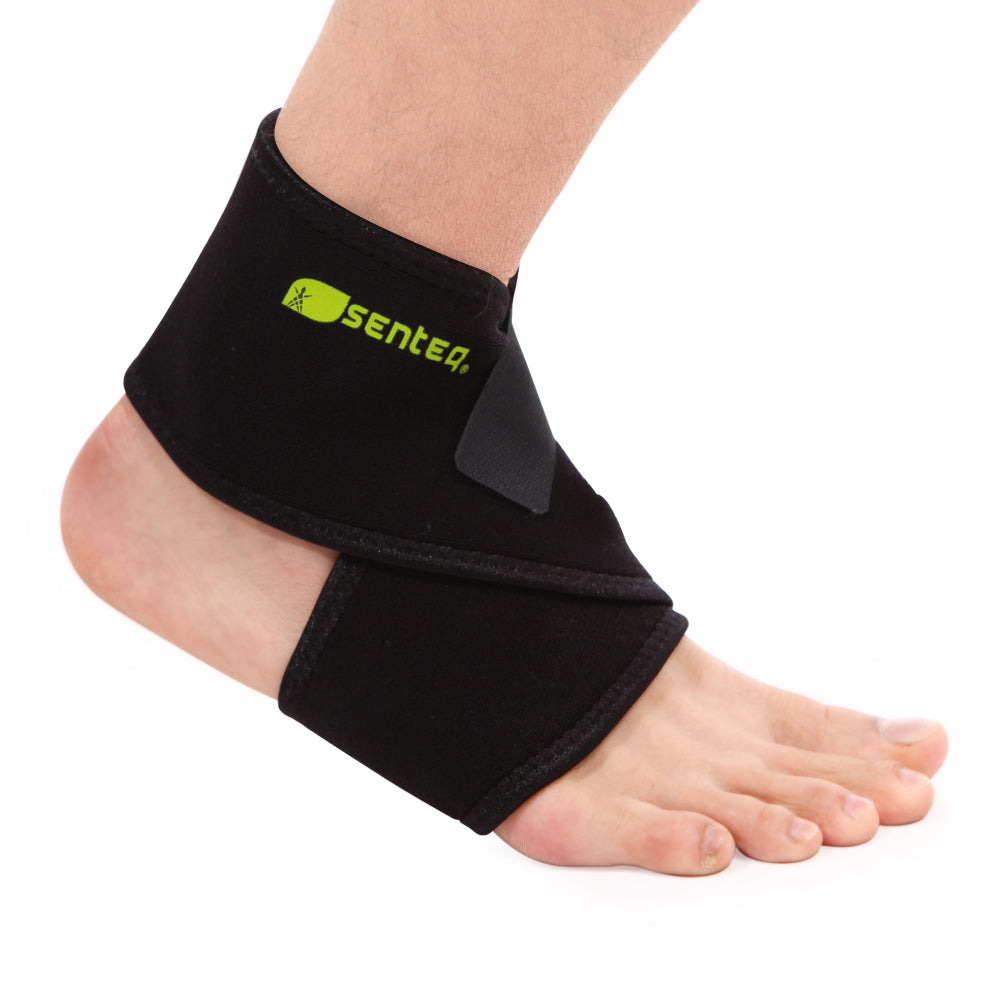Wrist Pain 101: Common Causes, Treatment, and Prevention
Health and fitness are a huge part of the modern lifestyle. But while many people know what they should be doing to look after their diet or take care of their mental health, other areas often get neglected, such as the wrists.
While wrist pain is often caused by sprains or fractures from sudden injuries, it is also a common and inescapable side effect of lifestyles and jobs that require repetitive motion or strain.
Thankfully, you can take steps to help prevent and combat wrist pain. Read the article to find out the most leading causes of wrist pain and how you can avoid them so you can get back to being your old self again.
COMMON CAUSES OF WRIST PAIN
Pain in the wrist can be a relatively common complication of injury, both sudden and accumulative. Depending on the specific ailment, the pain level varies from discomfort to becoming debilitating.
Wrist Fracture
The wrist can become injured or damaged for many reasons. One way it commonly occurs is through fracturing the bones of the wrist. This can happen for a variety of reasons, including accidents and falls, weightlifting exercises, and repetitive stress on the wrist due to certain occupational hazards.
Typically, immediate medical attention is needed after sustaining a fracture because bony fragments may become displaced or linger in an improper position. If not treated properly, the pain will continue to occur as well as numbness and tingling in fingers and hands.
Osteoarthritis
Osteoarthritis is a degenerative form of arthritis, so the disease progressively worsens as time goes by until the bone and cartilages are harmed to the point where there is simply not enough natural material to protect and support surrounding structures.
Wrist osteoarthritis usually causes pain and stiffness and you could also see deformation in the hands and fingers or an ache in the forearm near the elbow.
Rheumatoid Arthritis
A form of osteoarthritis, rheumatoid arthritis happens when one's immune system attacks the tissues around a joint in a way that eventually causes inflammation. The synovium tissue inside the joint becomes inflamed and produces more cells, which affects the cartilage within.
Wrist Tendonitis
Tendonitis is an inflammation of the wrist tendon. The most commonly affected tendons are the ones in our hands and wrists. These tendons are surrounded by fatty tissue which is like their natural cushioning.
But when we overexert our body in repetitive motions such as hobbies, recreational or occupational activities, we can cause an excessive inflammation that damages these tissues and lead to tendonitis- with annoying symptoms such as pain that worsens at night, stiffness, and restriction of movement.
Carpal Tunnel Syndrome
Carpal tunnel syndrome is one of the most common wrist conditions. It occurs when there is excessive pressure on the median nerve at the wrist. This can be caused by overusing your hands such as when typing on a keyboard, prolonged activity without taking a break, injury, or medical conditions.
Carpal tunnel syndrome can gradually worsen until it begins to interfere with your daily activities, so if you are experiencing numbness, tingling, pain, weakness, or clumsiness in your fingers, wrists, or hands it is important to speak with a physician.
Wrist Sprain
A wrist sprain happens when the ligaments in the wrist are stretched too far or torn due to sudden, forceful activity such as a fall onto the hand, a car accident, or a traumatic event that causes sudden movements that twist the wrist.
This can also happen during sports and outdoor recreation:
- Swimming - since your hand and wrists endure a huge amount of stress while swimming, even just one stroke, initiating a flip turn or keeping your arm still underwater for too long can cause this injury
- Tennis - tennis players experience wrist fatigue after all the volleys and forehand strokes they do.
- Handstands/ Hand tricks - these tricks involve movements of both wrists simultaneously or performing plenty of repetitions in a row which overworks your wrists until they give out completely.
Ganglion Cyst
Ganglion cysts are benign swellings that may collect fluid from around a joint or from the tendons that pass over the wrist. They can often go unnoticed for a surprisingly long time since those types of cysts can be asymptomatic but over time, they may cause pain and irritation as the fluid may connect to the tendon or ligament around that joint.
Cubital Tunnel Syndrome
Cubital tunnel syndrome, or ulnar neuropathy, is so-named because it usually involves the ulnar nerve which runs through the cubital tunnel in the elbow. The nerve may become squeezed when people bend their elbows so much. This can cause pins and needles, numbness, weakness in the hand, and inability to curl the fingers.
TREATMENT
Treatment for wrist pain varies based on the cause of the pain. Therefore, it's important to know the cause of your wrist pain to get appropriate treatment.
Self-Care Treatment
The acronym 'RICE' is the first strategy for anyone who suffers from wrist pain. It stands for Rest, Ice, Compression, Elevation.
- Rest your wrist by avoiding activities that might aggravate it.
- Apply cold therapy to reduce swelling and inflammation.
- Most healthcare providers recommend compression. Use an elastic bandage to wrap your wrist. Make sure that the wrap is not too tight nor too loose.
- Raise your wrist so it’s above your heart. This will also help reduce the pain and the swelling.
- Your doctor may also suggest wearing support braces or splints.
Medication
Non-steroidal anti-inflammatory drugs (NSAIDs) are medicines that reduce pain and inflammation commonly taken for conditions related to arthritis, sprains, and strains (among other things). While they won't make your wrist stop hurting, they can help with the inflammation and provide some quick relief.
Surgery
Surgery is considered for people with acute injuries or very complex conditions. Symptoms are caused by an abnormality in the outer lining of the joint causing it to wear down. The surgery's purpose is to replace this thin layer with a protective fluid that will reduce inflammation, relieve pain, and often slow the progression of arthritis.
TECHNIQUES FOR PREVENTING FUTURE WRIST PAINS
Many people experience wrist pain at some point in their lives, which can be attributed to physical factors like posture, heavy lifting, and repetitive motion. While no one approach will work for everyone with wrist problems, the best thing you can do for your wrists are:
Build Bone Strength
A variety of factors can lead to wrist pain including playing sports or using a computer. These actions require pushing your wrist forward to limit movement which weakens the wrist-stabilizing muscles and strains the ligaments and tendons that support it.
You can avoid this by strengthening your bones and joints and doing some light exercises. Also, make sure that you get an adequate amount of calcium to help prevent fractures.
Proper Ergonomics
Some of the most common concerns from people suffering from wrist pain are those during occupational activities, tasks that involve repetitive motions of the hands, wrist, and/or arm.
In some cases, this may arise as a symptom of a job-related injury or pre-existing condition. You must take steps to prevent yourself from experiencing wrist pain. One way to do this is by practicing ergonomics.
Prevent Falls
By following these tips, you can lessen your chances of falling and preventing wrist pain:
- Notify people if something is in the way
-clear up low furniture and anything that tends to cause slip and fall accidents.
- Be wary of changes in flooring such as tile, waxed hardwood floors, and low pile carpets. - Remove various tripping hazards such as throw rugs or large objects.
- Add lighting if it is dark when you open the door.
Conclusion
There are many different types of wrist pain and it's important to visit your doctor to find out the root cause of your pain. If you're in a lot of pain after resting, or there's pain on just one side, then head straight to the hospital- don't wait!
There is a lot of misinformation and confusion surrounding wrist pain and the large variety of possible causes and treatment options makes it difficult to make sense of everything. This post aimed to summarize some resources which can help you better understand wrist pain, its causes, and treatment options.
Disclaimer: Although the information is gathered with great care, please note that the tips given on this website by no means substitute medical advice. If you’re experiencing any pain, consult your healthcare professional immediately and follow his advice regardless of what you’ve learned on this website.







